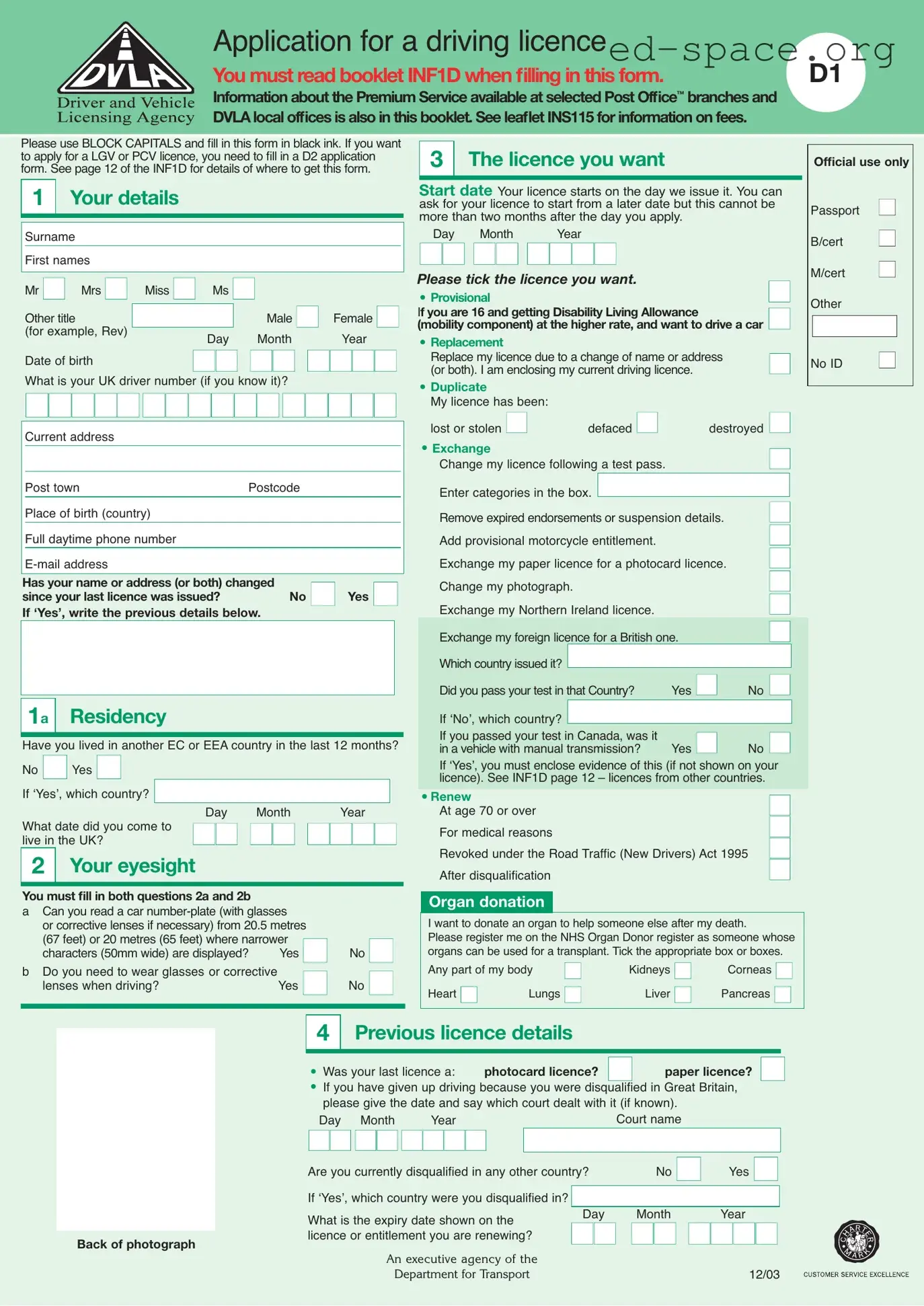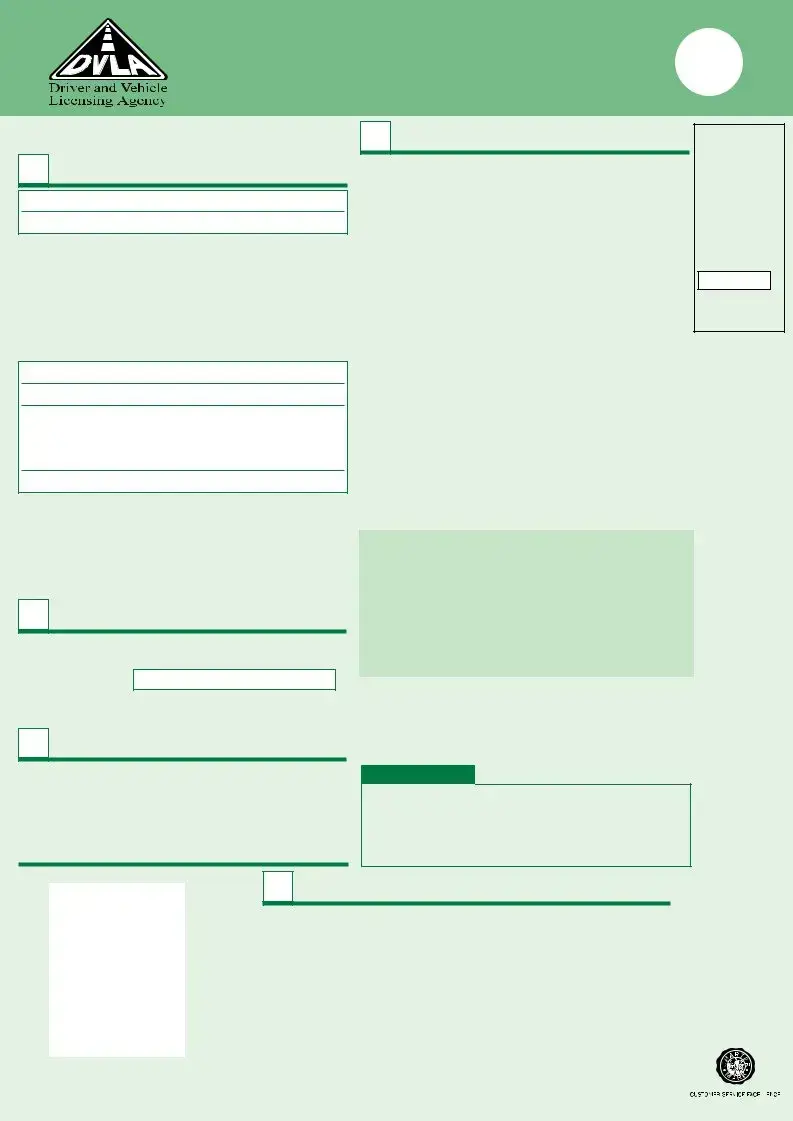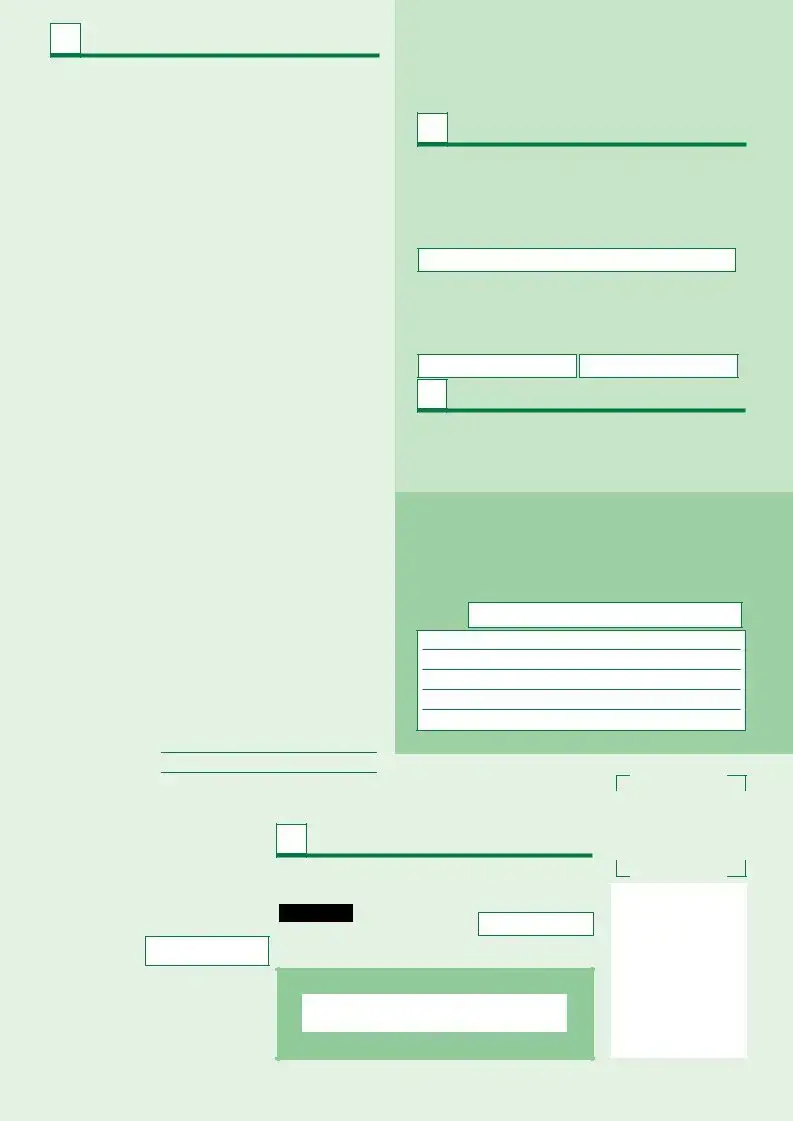What is a D1 DVLA form used for?
The D1 DVLA form is an essential document for anyone wishing to apply for a driving license in the UK. It serves multiple purposes, including applying for a provisional license, renewing a license upon expiration, changing details on a current license such as name or address, and replacing a lost or damaged license. Additionally, it's used when converting a paper license to a photo card license, updating a photo, or registering as an organ donor.
How do I fill out the D1 DVLA form?
To properly fill out the D1 DVLA form, you should use BLOCK CAPITALS and black ink throughout to ensure clarity. The form is divided into several sections that you'll need to complete, including your personal details like name, address, date of birth, and contact information. If your name or address has changed since your last license was issued, you'll need to indicate this and provide the previous details. Additionally, you must answer questions about your residency, eyesight, desired type of license, and any changes in your medical condition. Make sure you read the accompanying INF1D booklet for guidance on filling out the form correctly.
Who needs to sign the back of my photo for the D1 DVLA application?
If you are providing identity documents other than an up-to-date UK, EC, or EEA passport with your D1 DVLA application, someone reliable and who has known you personally for at least two years must sign the back of your photograph. This person must not be a relative or a member of the Post Office staff processing the application if you opt for the Premium Checking Service. The individual signing your photo must attest that the photograph is a true likeness of you. The DVLA conducts random checks on those signing photographs for driving license applications to ensure authenticity.
What should I do if I've recently moved from another EC or EEA country?
If you've moved to the UK from another EC or EEA country within the last 12 months, you're required to disclose this on the D1 form. You'll need to indicate 'Yes' to the residency question, specify which country you've lived in, and provide the date you came to live in the UK. This information is important for the DVLA to process your application correctly and ensure that you meet all requirements for obtaining a UK driving license.
How and where can I submit my completed D1 DVLA form?
Once you have completed the D1 DVLA form, you can submit it along with any required documentation and the appropriate fee to the DVLA. Documentation may include your current driving license if you're applying for a replacement, change of name, or renewal; identity documents; photographs; and a medical questionnaire if applicable. The form and documents can be submitted at selected Post Office branches that offer the Premium Service or mailed directly to the DVLA. If mailing your application, you may wish to use a secure delivery service and include a pre-paid secure envelope for the safe return of your original documents.




